- Start
- Our brewery
- The art of brewing
The art of brewing
About the art of brewing beer
In Distelhausen, we are devoted to our home region and place great value on our roots and traditions. This is why we have always brewed our beers according to long-established and traditional brewing methods. This is because here in Distelhausen, we have always been passionately committed to our community and local crafts.
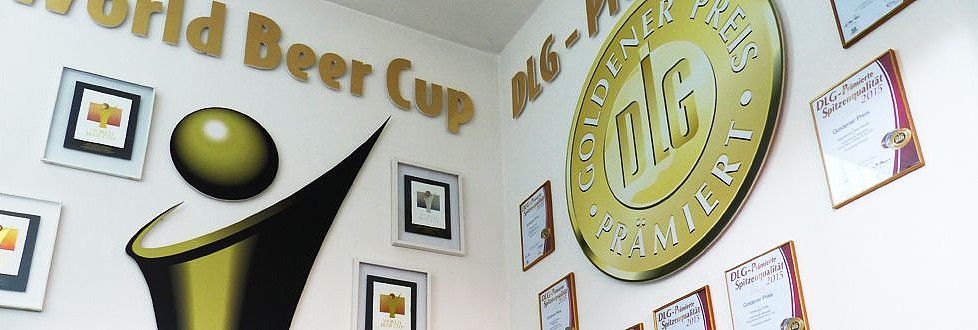
The brewing trade
Our brewing trade: magnificent!
In the same way that agriculture has formed the picturesque surroundings of Distelhausen for many generations, we have served to support and enhance the beer diversity and culture in our region.
The brewing trade found its way to Distelhausen as early as 1811. Founded in 1811 as Brewery Womann and acquired in 1876 by Ernst Bauer, today we produce regional beer specialities which have earned nationwide recognition thanks to their quality and outstanding taste. It is not by chance that Distelhäuser is among the most successful breweries worldwide – a fact that is confirmed by the many national and international awards! There is an old saying that “a trade in hand finds gold in every land”, and the many gold medals adorning the walls of our brewery show that this is true of our brewing trade. And the brewery is still in the hands of the Bauer family to this day.

Slow Brewing
Good things come to those who wait
A truly special beer needs to be brewed with great care and therefore takes a little time – from the selection of the ingredients to the brewing method and storage. The mashing process we apply is adapted to the individual recipes and is very intense and time-consuming. We consciously refrain from using modern rapid-fermentation processes and literally do not put any pressure on the yeast: Our master brewers give it the time it needs to complete its fermentation processes and develop the unique aromas. Our beers are subsequently stored for up to eight weeks in order to achieve their full maturity.
Pleasure needs time and quality has its price. This clear conviction is also reflected in the fact that we apply the strict criteria of the "Slow Brewing” society, of which we have been a member since 2014. But the quality of the beer, which is inspected at monthly intervals, is not the only criterion for admission. The company and the people behind it are just as important for Slow Brewing. It is checked which values are held by the brewery and how sustainable their work is in the social environment or in environmental protection.
You can find out more at: www.slow-brewing.com
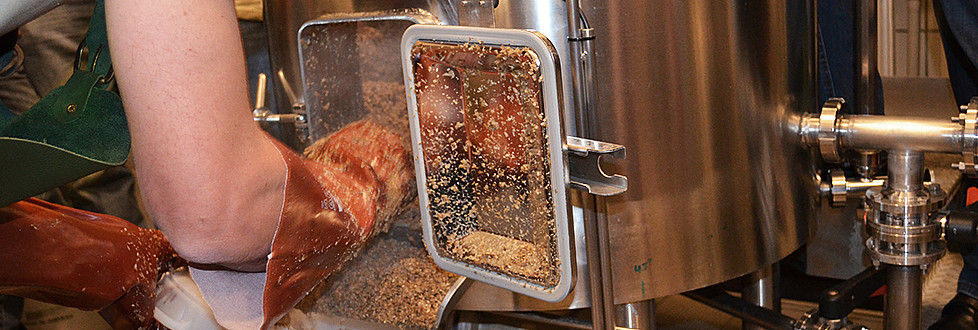
Brewing method
Our brewing method – the recipes are all-important
In the brewery, our master brewers mix the crushed barley and wheat malt precisely with the brewing water in order to produce the so-called mash in accordance with one of our own Distelhäuser recipes. When heated, the natural enzymes within the malt turn the starch into malt sugar and extract other essential substances from the malt.
The liquid components, known as wort, and the solid components, known as draff, are then separated from each other in the lauter tun. Our brewers then add hops to the wort according to individual, traditional recipes and boil the brew for a long period. The amount of hops determines how bitter the finished beer will taste.
In the next stage, the trub is removed in a so-called whirlpool and the wort is cooled. Continuous testing of the beer quality ensures that the wort has the perfect quality when it leaves the brewery.
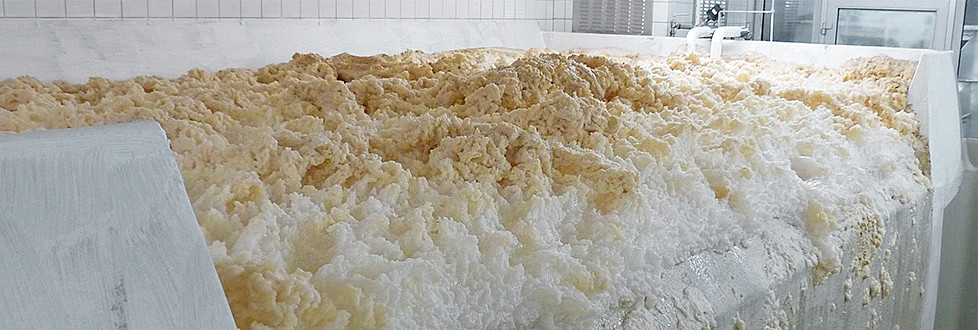
Fermentation and storage
Take the best quality and lots of time …
During fermentation, yeast is added in order to turn the malt sugar contained in the beer wort into alcohol and carbon dioxide. Here, we consciously refrain from using the modern process of pressurised fermentation, instead using so-called long cold fermentation at low temperatures. And the process of cold trub separation used here is today practised in only a few breweries, as it is very time-consuming.
The yeast influences the taste of the beer significantly. Two different yeast strains ensure variety: Bottom-fermenting yeast will be deposited on the floor of the tank after fermentation, whereas top-fermenting yeast will be transported to the surface.
Through the use of our own pure yeast cultures, which are subjected to additional thorough cleaning in a yeast filter, we are able to guarantee the consistently high quality of our Distelhäuser beers.
At temperatures around 0 °C, the fresh beer is moved to the storage tanks to reach full maturity. We give the fresh beer around four to six weeks to allow it to stabilise naturally and develop its special characteristics.
At the end of the maturing period, the beer is filtered – except for our naturally cloudy beers – and finally bottled.
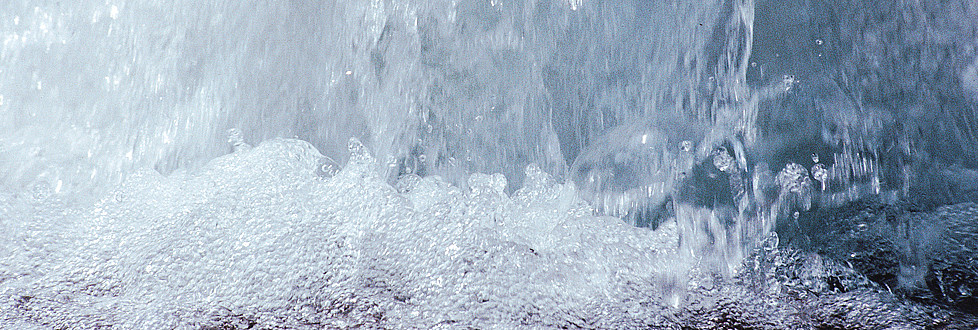
The purest water: from our own well
Clear water is an important factor for the taste of a beer. This is why the requirements we place on our brewing water are considerably stricter than those placed on drinking water.
Our brewing water does not come from the public water supply, but from three wells that we had dug and connected in the meadows of the Tauber river in the 1990s. This pristine and natural well water is subsequently softened and desalinated in the brewery in order to guarantee the clear taste.
Due to the fact that we bought or leased the land around these wells and subsequently planted greenery on these areas in order to rule out contamination of the groundwater through intense agricultural use, for example, the Distelhäuser brewery even makes an active contribution towards the long-term protection of the groundwater in the Tauber valley.

Best hops: the "green gold"
Brewers treasure hops above all because of their aromatic and bitter constituents which produce the distinctive taste of beer. Only around 120 grams of hops are required for a hectolitre of beer – and yet it is this small amount that ensures the right level of bitterness and aroma.
This wasn’t always the case. Earlier it was customary to mix almost everything into the beer. The method of using hops to brew beer was mainly introduced by monks in the middle of the 9th century. And the German Beer Purity Law established in 1516 meant the plant became even more significant as an ingredient.
For centuries, people planted hops wherever beer was going to be brewed. This only changed after the invention of the railway. From this point on, some regions were given over completely to hop growing, such as the Hallertau, Tettnang on Lake Constance or the town of Spalt in Middle Franconia. We also have some hops growing in our show garden, but only around 150 plants which would be just enough for about six brews.
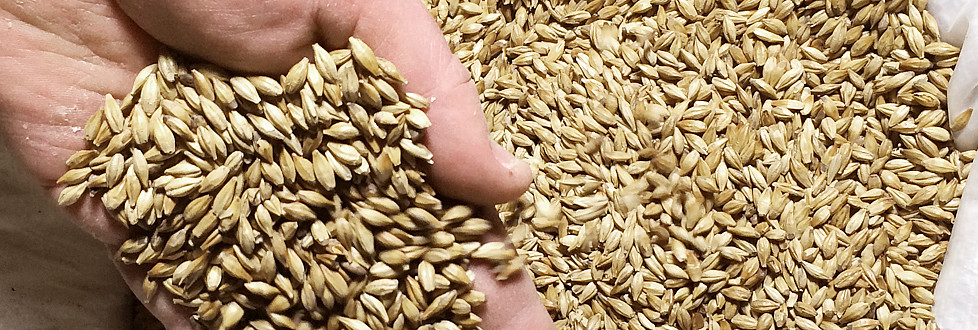
Home-grown brewing barley: the soul of our beer
Malt produced from barley is one of the main constituents of beer in accordance with the German Beer Purity Law of 1516. It gives the beers their typical full flavour and colour.
Our brewing barley is sourced exclusively from the local region – some 3,500 tonnes per year. The crop is more expensive here than its cheaper counterparts on the international market but, as Roland Andre – Distelhäuser Brewery’s master brewer and managing director – stresses, “it is worth paying extra for the high quality of our local brewing barley and also to support our farmers in the Main-Tauber region”.
This also contributes to protecting the water here: in beer production, malts made from low-protein barley are preferable, and this means there is no need for intense fertilisation of the soil with nitrogen or the use of other fertilisers. This prevents these substances – which can be harmful to the groundwater – from getting into the ground.
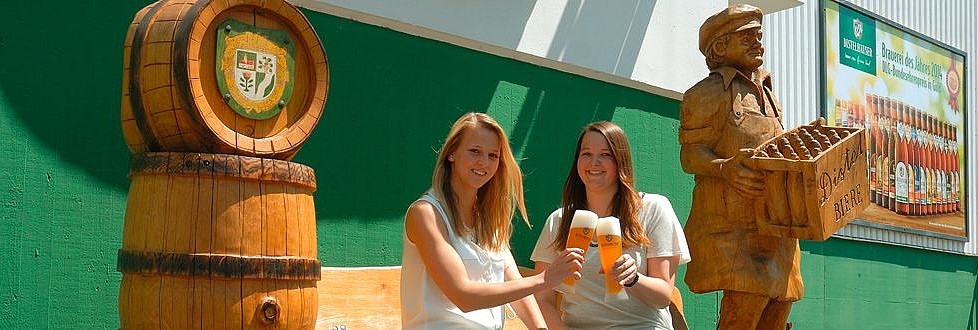
Our little secret: dealcoholisation
Unlike beer products in which the fermentation process is simply stopped, the basis for our non-alcoholic beers is always the original beer!
The alcohol is gently removed from our beer in a sophisticated and high-tech procedure. This involves rectification at low temperatures and under vacuum. And this is the start of our little brewing secret. The result is no secret, however: the real, authentic taste of our non-alcoholic beers.
Just how good our non-alcoholic beer tastes is testified, among other things, by the audience award of Germany’s “Motorrad” (motorcycle) magazine.
